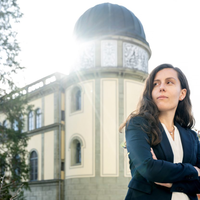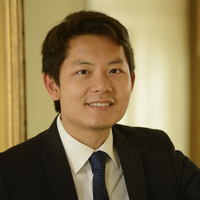Masonry is a method of constructing buildings by laying stones, bricks, or concrete blocks that has existed since the era of the Egyptian pyramids, and it enables the building of livable structures with materials that are easy to obtain. That is why, even today, 60% of the world's population lives in masonry buildings. However, masonry buildings have a major weakness: they are extremely vulnerable to earthquakes. Moreover, many masonry buildings are in earthquake-prone regions, with 80% of earthquake victims around the world in the past 100 years having died in the collapse of masonry buildings. In the Turkey-Syria earthquakes of February 2023, many of the buildings that collapsed were masonry buildings.
Reinforcing masonry buildings against earthquakes is a pressing challenge, but existing earthquake resistance techniques require sophisticated technology and equipment to implement and are not easy to use. Furthermore, the middle-to-low income classes who make up the majority of those residing in masonry buildings do not have the spare funds to spend on reinforcing the buildings where they live against earthquakes. As a result, there is little progress in reinforcing masonry buildings against earthquakes, which continues to result in more victims whenever they occur.
Kenjiro Yamamoto, a project research associate at the University of Tokyo's Institute of Industrial Science, has co-developed an earthquake-resistant paint from a mixture of resin and fibers for the purpose of reinforcing masonry buildings against earthquakes. The earthquake-resistant paint came about as an improvement on the basis of a coating for concrete developed by Masaomi Suzuki, who had worked at a building renovation company. When the paint is applied to the walls of a masonry structure and allowed to dry for about two weeks, the structure gains strong earthquake resistance. Applying it does not require special technology, and it can be produced locally in many regions around the world, so it can be provided at low cost and is easy to use even for middle-to-low income people with no cash to spare for earthquake reinforcement. The outer walls of masonry structures are regularly repainted, so just adding a coat of this paint at that time can significantly increase a structure's earthquake resistance capacity.
Yamamoto along with Suzuki and others founded Aster in order to put the earthquake-resistant paint to practical use in January 2019 while in graduate school at the University of Tokyo. In partnership with the Japan International Cooperation Agency, they proposed to reinforce school buildings against earthquakes to the Philippine government, and they applied the treatment to two local school buildings. The treated buildings have since suffered several earthquakes but are said to remain undamaged. Further, Aster has proposed the earthquake-resistant paint to private building contractors operating locally.




